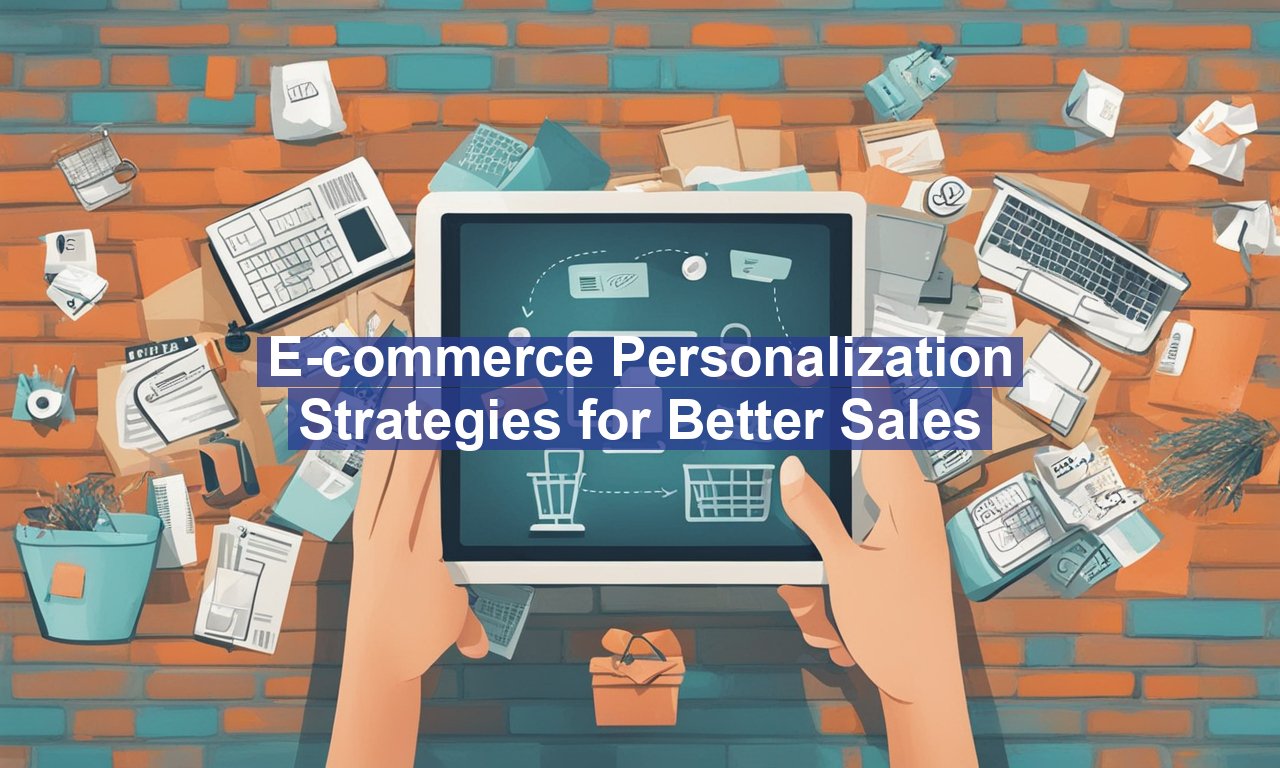E-commerce personalization strategies for better sales: Imagine walking into a store where every item on display looks like it was tailored just for you. The salesperson knows your tastes and preferences and is always ready with recommendations that you might like. This magical place exists in the world of e-commerce personalization strategies for better sales can offer highly personalized shopping experiences, resulting in better sales. But how can companies achieve this level of personalization? Buckle up, as we explore some effective e-commerce personalization strategies for better sales that can significantly enhance sales figures.
Understanding Your Customer
The first step in creating a personalized shopping experience is to understand your customer. This involves gathering data on their behavior, preferences, and purchase history. Modern e-commerce platforms equip businesses with an array of tools to analyze this data.
Utilizing Customer Data
To achieve a higher level of personalization, it’s important to leverage customer data effectively. This can include:
- Browsing History: Track what products customers are viewing, how long they stay on each product page, and what search terms they use.
- Purchase History: Monitor the products customers have purchased in the past and use this information to suggest similar items or complementary products.
- Demographic Data: Use information such as age, gender, and location to personalize recommendations.
Machine learning and AI can process this massive amount of data to provide insightful recommendations. According to a McKinsey report, 35% of what consumers purchase on Amazon and 75% of what they watch on Netflix come from product recommendations based on such data insights.
Creating Personalized Content
Once you’ve gathered the necessary data, the next step is to create personalized content that resonates with individual customers. Here are some actionable strategies:
Email Personalization
Email marketing remains one of the most powerful tools for e-commerce businesses. To make your email campaigns more effective, consider:
- Segmentation: Segment your email list based on customer behavior, demographics, or past purchases to send targeted emails.
- Personalized Subject Lines: A personalized email subject line can increase open rates by 26%, according to Campaign Monitor.
- Dynamic Content: Use dynamic content within your emails to show different products or offers to different segments of your audience.
Product Recommendations
If used intelligently, product recommendations can boost your sales substantially. Here are a few ways to implement this:
- Upselling and Cross-Selling: Recommend higher-value items or complementary products based on the items currently in the customer’s cart.
- Personalized Landing Pages: Create landing pages that are tailored to individual customers based on their interactions with your website.
- Behavioral Triggers: Send personalized offers or discounts through pop-ups or emails triggered by customer behavior, such as abandoning a cart or browsing specific product categories.
Enhancing Customer Experience
Personalization goes beyond just product recommendations and email campaigns. The overall customer experience can also be fine-tuned for greater engagement and higher sales.
Chatbots and Virtual Assistants
Chatbots and virtual assistants can provide real-time, personalized support to customers. These tools can answer queries, offer product recommendations, and even help in resolving issues, making the shopping experience smoother.
Customer Feedback
Taking customer feedback seriously can help you fine-tune your personalization strategies. Conduct surveys and encourage reviews to gather insights into what your customers like and dislike. Using this data allows you to improve customer satisfaction and loyalty, ultimately leading to better sales.
Implementing Dynamic Pricing
Dynamic pricing involves adjusting prices in real-time based on demand, competition, and other factors. By using dynamic pricing algorithms, you can offer personalized pricing to different customer segments. This strategy not only maximizes profits but also encourages repeat purchases by offering loyal customers better deals.
Conclusion
E-commerce personalization strategies for better sales isn’t just a trend; it’s a fundamental strategy for boosting sales and retaining customers. By understanding your customers, creating personalized content, and enhancing their overall experience, you can create a shopping environment that feels unique to each individual. Implement these strategies to not only stand out in a crowded market but also turn casual visitors into loyal customers.
For those interested in diving deeper into effective e-commerce personalization strategies, resources like this Forbes article and detailed guides from Shopify offer invaluable insights.


